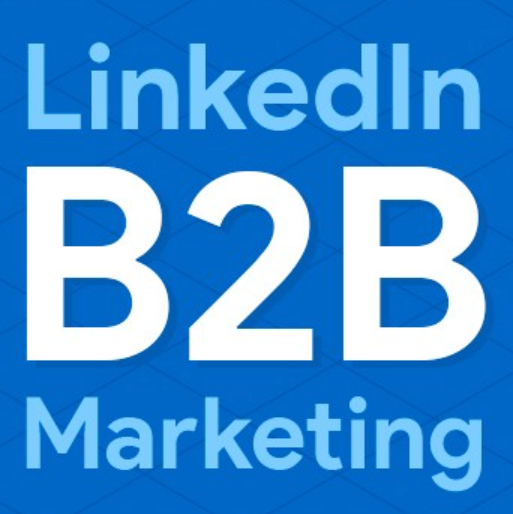
Launched in 2003, LinkedIn is now more than 20 years old and a fixture in the business community. No longer the domain of mostly job seekers and salespeople, the platform is the de facto social media of choice for the workforce — the Facebook and digital water cooler for professionals. But tried-and-true LinkedIn B2B best practices are elusive and can differ meaningfully across industry sector, company size, and geographies.
Owned by Microsoft and boasting more than 100 million daily users around the world, it’s stats like these from IDC that have caused B2B executives to take notice: “75% of B2B buyers and 84% of C-level/VP executives use social media in their purchasing decisions“. For B2B companies looking to grow, getting active in a meaningful way on LinkedIn has become a non-optional cost-of-doing-business. Here are five LinkedIn B2B best practices to consider when developing your social media marketing and sales plans.
One: Set Realistic Expectations
When used properly, LinkedIn can be especially effective in helping teams stay top-of-mind with existing personal networks, and then uncover and activate opportunities within them. As well, the platform can also be useful in sharpening pitches and even accelerating sales cycles for most B2B companies, large and small.
But absent six-figure advertising budgets, getting active on LinkedIn is unlikely to spawn a flood of high-quality new inbound leads in the short term. It’s possible, certainly, with the right kind of solution and offer (e.g., free trial in hot category) but that’s more atypical than not.
For most companies just getting serious on LinkedIn, the contribution is going to be assistive, not game-changing, if only because most users on LinkedIn aren’t in active “shopping” mode like they are on Google or Bing, where we can see intent via keyword usage.
Two: Master The Fundamentals
Like most social media platforms, LinkedIn can get complicated quickly. Whether it’s evaluating advertising options available or figuring out which flavor of subscription to choose, there aren’t really any inconsequential decisions to be made because it’s an integrated system.
So getting the basics directionally correct — if not perfect — is job number one in creating a solid foundation. There are three main considerations here: a solid company page, continuity across staff profiles (via training), and a baseline content strategy.
- Company Page. There are plenty of inside-baseball style tips and tricks involved with optimizing a corporate LinkedIn page, but the main ingredients are straightforward: current logo and description, accurate links to website and other digital properties, and optimized for 2-3 relevant keywords. Make it easy for employees to link to the page and for audiences to find it.
- Staff Profile Continuity. One of the superpowers of B2B marketing on LinkedIn is the network effect that comes from coordinating employee efforts on the platform, and that results from training. Most employees are happy to make contributions on LinkedIn but require some baseline guidance around etiquette and acceptable usage. Note: the recommendations and guidelines will vary dramatically by industry sector and premium subscriptions are usually required to roll out meaningful programs these cost $30-$60/month.
- Promotional Strategy. Absent a steady stream of fresh content from a corporate marketing group or other reliable source, LinkedIn users will need to get creative to stay active and make progress on the platform. This typically involves piggybacking on industry news sources or other LinkedIn users and providing a unique POV or commentary on the news. It’ll take some trial-and-error to find a comfortable cadence and this will come easier to those who are active on other social media platforms.
Three: Adjust Workflows
The key to success on LinkedIn is not unlike being successful in any other community: showing up and being active is a big part of success. Many B2B salespeople nowadays — some say too many — incorporate LinkedIn usage into their daily workflow, not unlike they do with checking email or reading the news.
To encourage activity, sales and marketing managers need to provide teams with the tools to be successful and also the mandate to be active on the platform. If there isn’t a LinkedIn line item on a staffer’s performance review, it’s probably not going to be prioritized.
Larger organizations typically assign LinkedIn duties to a handful of executives and marketers, who set the tone and content promotion strategy, and that in turn helps interested co-workers be engaged. This can be complicated in regulated industries like financial services or healthcare where external communications have strict approval protocols but many of the world’s largest brands are actively expanding their LinkedIn footprints as they consider the platform a marketing priority for recruiting, brand building and networking. (Look up your competitors’ advertising here.)This collaborative approach ensures marketing campaigns resonate with the target audience and deliver measurable results.
Four: Understand Advertising Options
For all of the ABM (account based marketing) tools available in the marketplace these days, LinkedIn is the GOAT. It’s the biggest professional platform, has been around for a couple of decades, is well-managed, and is widely considered to be mainstream. This kind of environment encourages engagement and attracts new users. It’s safe for brands.
While these characteristics make it an ideal platform for corporate social media needs, the increased activity — it’s grown from 400M users to more than 1B in 10 years — has resulted in skyrocketing competition. So it’s both more difficult to cut through the noise with organic posts and more expensive to buy advertising now. Yet for many B2B companies, it’s also now a persistent line item in marketing budgets.
And for good reason: the targeting ability is tough to match for mainstream marketers, both in terms of specificity and reliability. For B2B marketers just starting to consider the platform, there are three main ad types to be aware of:
- Sponsored Posts. There are several sponsored formats to consider but they are all effectively different varieties of “boosted content” and are what many marketers think of initially when discussing LinkedIn advertising. These are effective at increasing a message’s reach beyond first or second-level contacts and at specific audiences, whatever the content – text, video, etc.
- Dynamic Ads. These personalize the messaging by incorporating a user’s name and photo and can be impactful as a result, and are used widely by recruiters, for example.
- Messaging Ads. The LinkedIn version of email marketing. There are a couple of options and both allow advertisers into the messaging inbox of targeted audiences to make a pitch and serve up a calls-to-action (sign up now, download).
Which advertising format is the best fit depends on the company and its assets. Large consulting firms produce vast quantities of custom content in the form of blog posts, white papers and reports, so that’s often their go-to tactic on LinkedIn. This is also true for many technology and SaaS companies as well. Most B2B companies active on LinkedIn use it to help with event recruiting, brand awareness and list building, and each objective can be addressed by at least a couple of different advertising options.
Five: Crawl > Walk > Run
Getting moving in the correct direction on any platform requires time and testing, and LinkedIn is no different. There will be unexpected consequences of becoming more active, like a higher volume of spammy inquiries and surprise messages from old acquaintances. It comes with the territory. The signal-to-noise ratio on LinkedIn is much more manageable than other social media platforms, but there is noise.
We typically advise a three month rollout for companies new to being active on the platform. That gives organizations time to establish their footprints, standardize employee profiles, build baseline networks, and get a feel for both organic engagement and advertising activity.
Once a foundation is in place, much can be accomplished in the way of brand awareness, list building, and, yes, eventually lead generation. LinkedIn requires a long-term view, regular attention, and ideally a healthy advertising budget for success. But if the recent spikes in platform activity from the likes of old school-ish B2B companies like Citi, Goldman Sachs, EY and Microsoft can be considered indicators, LinkedIn has much to offer.
Tim Bourgeois is a B2B lead generation consultant at East Coast Catalyst. Contact him at tbourgeois@eastcoastcatalyst.com to learn more about how ECC can help your company can use social media and digital advertising as the backbone of a B2B inbound marketing strategy.
